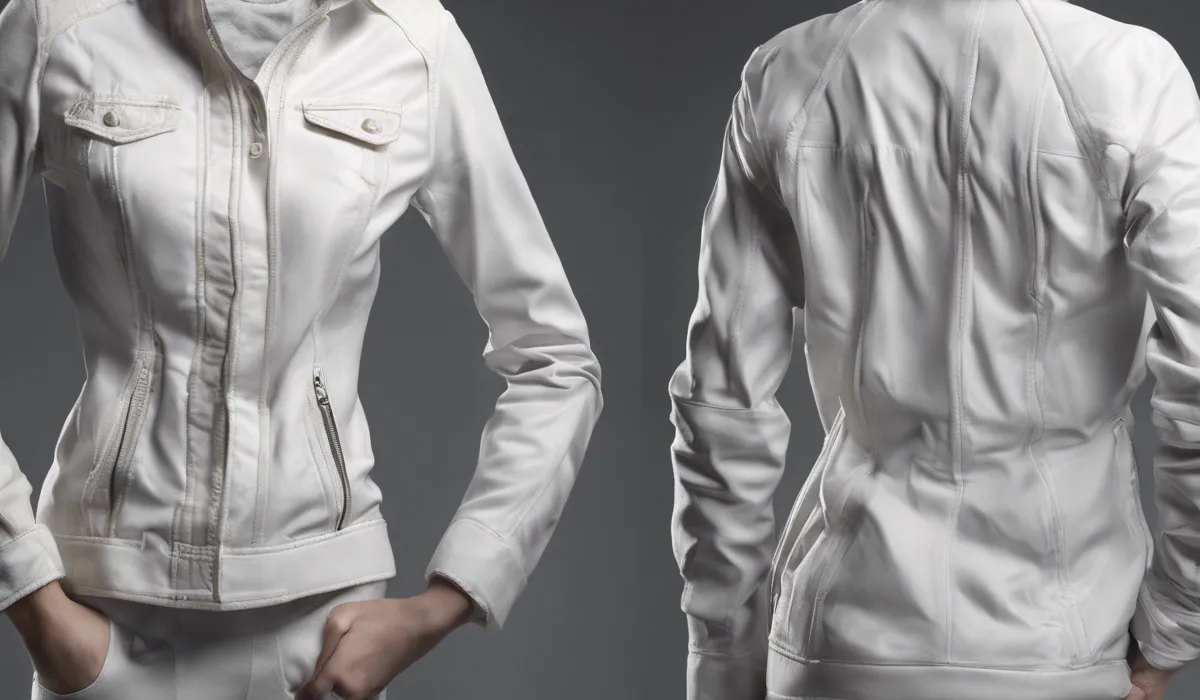Yes, mold can grow on clothes, particularly in damp, poorly ventilated environments. Prolonged exposure to moisture allows mold spores to thrive on fabric, potentially causing stains and odors.
Understanding Mold and Its Affinity for Clothing

What is Mold?
Mold is a type of fungus that grows in filaments and reproduces by forming spores that can travel through the air.
These tiny spores prefer to land in areas where there is plenty of moisture. Mold is not always harmful, but it can cause problems when it grows where it’s not wanted, like on our clothes.
Molds come in various colors, including black, white, green, or orange, and they can give off a musty smell.
Conditions Favoring Mold Growth on Clothes
Clothes can become moldy when left in a damp pile or when stored in a place with poor air circulation. High humidity, warmth, and darkness are mold’s best friends.
If you leave wet clothes in a gym bag or let them sit too long in the washing machine, you’re inviting mold to come and stay.
It is the prolonged exposure to these moist conditions that allows mold spores to settle in and grow on fabrics.
Most Vulnerable Materials
While mold can grow on many types of fabric, certain materials are more at risk. Natural fibers like cotton, linen, and wool offer mold a feast of organic materials to consume.
Synthetic fibers are less likely to support mold growth, but they are not completely immune, especially when mixed with natural fibers or when dirt and organic residues are present.
Preventing Mold Growth on Clothes

Storing Clothes Properly
To keep your clothes from becoming a mold’s next home, store them in a clean, dry place. Make sure your closets and drawers are not packed too tightly as this can trap moisture and reduce air circulation.
If you live in a particularly humid area, consider using closet dehumidifiers or silica gel packets to help absorb excess moisture.
The Role of Dryness
Keeping your clothes dry is crucial in the fight against mold. Never put away laundry that is even slightly damp. Make sure everything is completely dry before folding and storing.
If you get caught in the rain or spill a drink on yourself, dry these items as soon as possible to prevent mold from getting a foothold.
Laundering Tips
Regular laundering is key to preventing mold. Use hot water for materials that can handle it, as heat helps kill mold spores.
Add a cup of white vinegar to the rinse cycle for an extra boost of mold-fighting power. Make sure to transfer your laundry to the dryer promptly, or hang it up to dry in a place with good air circulation.
Drying Techniques
When using a dryer, select the highest heat setting safe for the fabric. For clothes that must air dry, choose a sunny spot or a well-ventilated area.
Remember, sunlight is not just good for brightening whites; it also has natural mold-killing properties.
Removing Mold from Clothes

Step-by-Step Mold Removal
When you discover mold on your clothes, act fast to remove it. Start by taking the clothes outside to brush off the loose spores.
This prevents mold from spreading inside your home. Then, wash the clothing using hot water and detergent.
For stubborn mold stains, soak the clothes in a mixture of hot water and oxygen bleach before washing.
Natural Remedies for Mold
Nature offers several solutions for mold on clothes. White vinegar, lemon juice, and baking soda are all excellent options for treating moldy fabric.
Apply these directly to the mold spots, let them sit for a while, and then wash as usual. Not only do these natural substances help kill mold, but they also deodorize the fabric.
Chemical Mold Fighters
If natural methods don’t work, you can turn to stronger chemicals like bleach or specially formulated mold and mildew removers.
Be sure to follow the instructions carefully and use these products in a well-ventilated area. Always test any chemical on a small, inconspicuous area of the fabric first to avoid damage.
Safety Precautions
When dealing with mold, protect yourself and others. Wear gloves, a mask, and protective eyewear to make sure you don’t inhale spores or get mold on your skin.
Keep the area you’re working in well-ventilated, and wash your hands thoroughly after handling moldy items.
If you have a severe mold allergy or respiratory issues, consider seeking professional help for mold removal.
FAQs About Mold on Clothes
Can mold grow on any type of clothing material?
Yes, mold can grow on various types of clothing materials, especially if they are left damp or stored in poorly ventilated areas.
What conditions cause mold to grow on clothes?
Mold grows on clothes when they are exposed to moisture for a prolonged period and are kept in environments with poor ventilation.
How can you prevent mold from growing on clothes?
To prevent mold, keep clothes dry, clean, and stored in well-ventilated areas, and use moisture absorbers or dehumidifiers if necessary.
Can mold on clothes cause any health issues?
Mold on clothes can potentially cause allergic reactions, respiratory issues, or skin irritation for some individuals.
Is it possible to completely remove mold from clothing?
It is often possible to remove mold from clothing by washing with hot water and detergent, but some stains and odors may persist, especially if not treated promptly.
Final Thoughts
Mold can indeed infest clothing, particularly when items are left in moist, inadequately aired spaces.
The presence of persistent moisture enables mold spores to proliferate on fabric surfaces, often leading to unsightly stains and unpleasant odors that may be challenging to remove.
